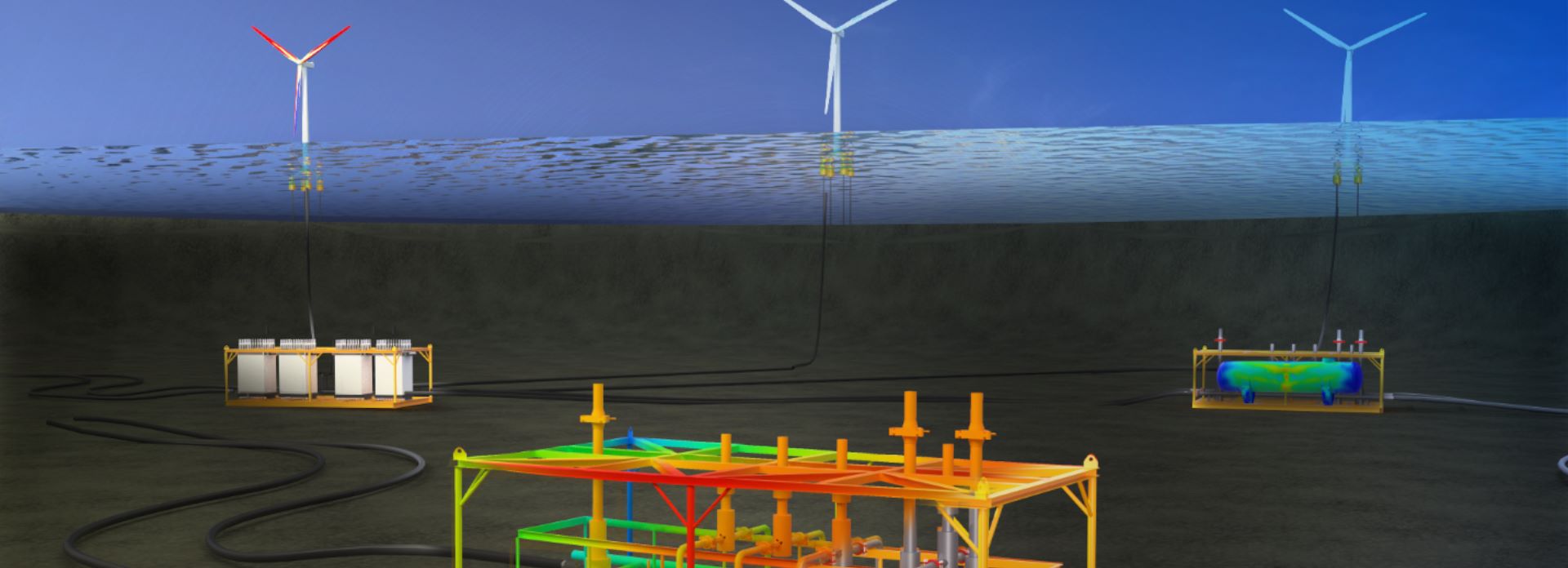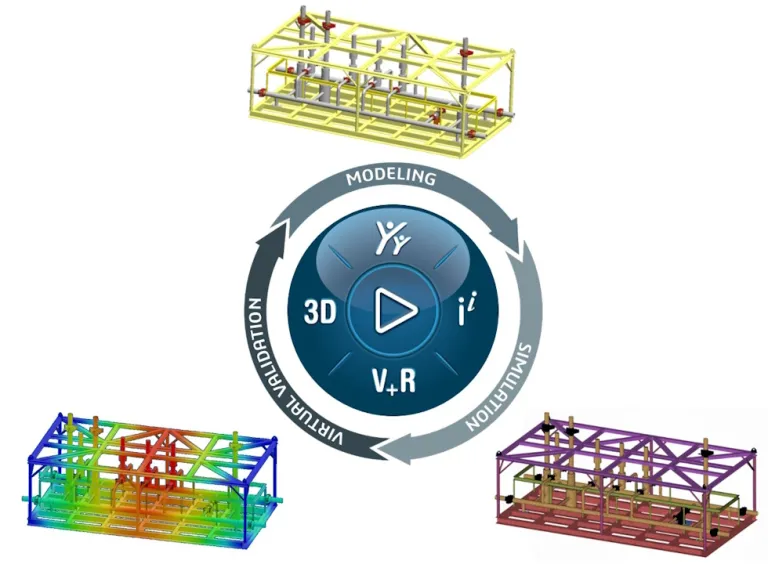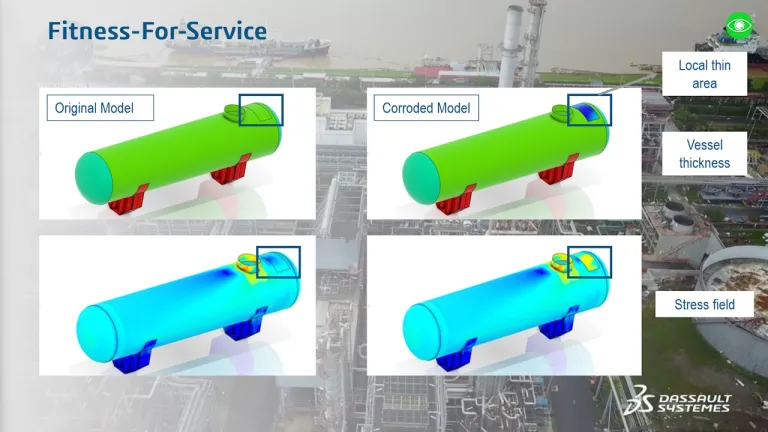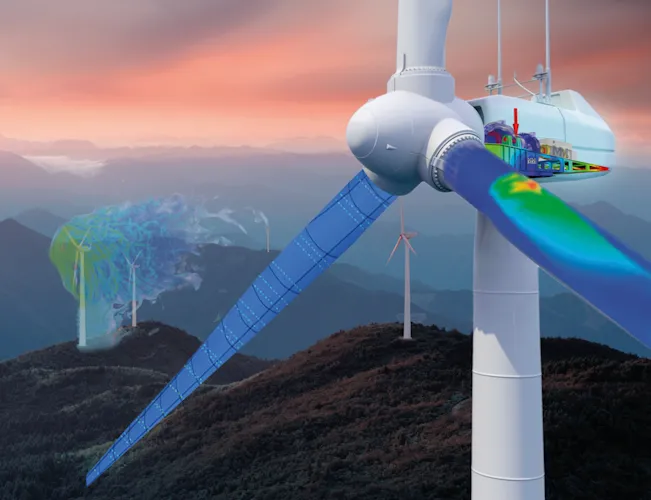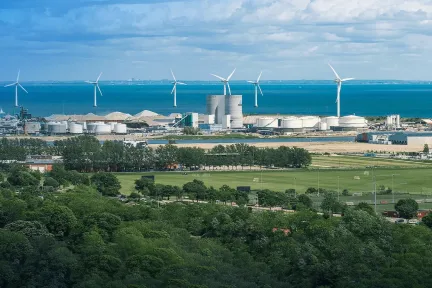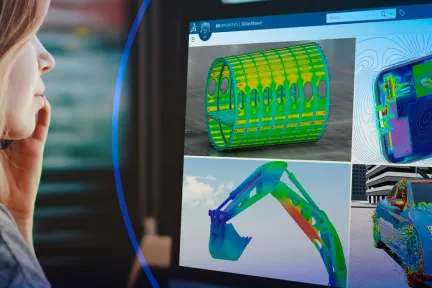SIMULIA Infrastructure, Energy & Materials Solutions
Simulation of infrastructure and facilities including mining, metalworks, chemical plants, wind parks and oil and gas facilities.
Advancing Infrastructure, Energy and Materials Industries Through Simulation
The global shift toward sustainability and away from fossil fuels is accelerating, driven by social, investor, and policy pressures. This transition impacts every aspect of the Infrastructure, Energy, and Materials (IEM) industries.
The SIMULIA Infrastructure, Energy & Materials (IE&M) portfolio offers advanced simulation solutions to tackle complex engineering challenges. From non-linear Finite Element Analysis (Abaqus FEA) to Computational Fluid Dynamics (PowerFLOW LBM and RANS Navier–Stokes solvers), SIMULIA addresses diverse needs.
Additional tools for electromagnetics (CST, Opera), multi-body systems (Simpack), and vibroacoustics (Wave6) enhance its capabilities. Integrated with the 3DEXPERIENCE platform, these solutions streamline workflows, connect with CAD tools, and boost efficiency gains across the product lifecycle.
Key Benefits of SIMULIA IEM Solutions
Reduce Costs and Avoid Waste
Virtual prototyping and design optimization reduce the need for costly physical tests, minimize errors, and help make better investment decisions.
Reduce Risk and Improve Reliability
SIMULIA enables accurate simulation of products, equipment, and infrastructure before they’re built, helping identify potential failures, optimize designs, and increase system reliability.
Optimize Performance and Efficiency
SIMULIA allows engineers to test multiple scenarios, materials, and designs, leading to higher efficiency, lower energy use, and better operational performance.
Enhance Collaboration and Decision-Making
Integration with the 3DEXPERIENCE® platform allows engineers, designers, and stakeholders to collaborate in real time, improving communication, traceability, and project outcomes.
Handle Complex and Large-Scale Systems
SIMULIA is capable of modeling complex infrastructure, energy networks, and industrial systems at scale, ensuring that even the largest projects can be simulated accurately.
Support Energy Transition and Sustainability Goals
SIMULIA helps companies design and optimize energy infrastructure and materials for a low-carbon future. By simulating renewable energy systems, emissions, and energy efficiency, customers can accelerate the transition to cleaner energy, reduce environmental impact, and meet ESG requirements.
SIMULIA Customers in the Infrastructure , Energy & Materials Industry
Why Choose SIMULIA IE&M Solutions?
MODSIM for Infrastructure, Energy & Materials
Unified Modeling and Simulation (MODSIM) empowers engineers to analyze and optimize designs throughout the entire development cycle, from concept to validation. Compatible with common CAD tools like SOLIDWORKS, it seamlessly connects design and simulation. By leveraging parametric models, engineers can quickly explore multiple scenarios, run design studies, and optimize performance early in the process.
This “left-shift” approach enables virtual performance assessments at the concept stage, reducing reliance on costly physical prototypes and avoiding late-stage redesigns. On the 3DEXPERIENCE platform, teams collaborate in a unified environment with a single source of truth. The digital thread ensures full traceability, compliance, and knowledge capture, delivering reliable, sustainable, and cost-effective solutions for the Infrastructure, Energy, and Materials industries.
Fitness for Service
Fitness for Service (FFS) evaluations ensure the continued safe and economical operation of critical assets in industrial energy and materials sectors, including refineries, nuclear plants, and battery production facilities, even as they degrade over time. Utilizing the advanced nonlinear and multi-physics analysis capabilities of SIMULIA Abaqus, FFS assessments reduce excessive conservatism, optimize asset life, and lower costs associated with compliance and physical testing.
Abaqus is widely recognized as a benchmark tool for API 579 Level 1–3 assessments, with many API 579 committee members relying on its robust capabilities. Through MODSIM workflows on the 3DEXPERIENCE platform, engineers can address complex geometries, streamline FFS processes, and enhance operational reliability and efficiency.
Computational Fluid Dynamics in IE&M
SIMULIA’s advanced fluid dynamics solvers provide high-fidelity analysis for a wide range of applications in Infrastructure, Energy, and Materials industries.
Engineers can utilize:
- RANS Navier–Stokes Solver: Ideal for analyzing pumps, pipes, and industrial components.
- Lattice-Boltzmann Single-Phase Flow Solver: Optimized for turbulent internal and external flows, such as gas dispersion.
- Lattice-Boltzmann Multiphase Flow Solver: Designed for complex porous media and multiphase scenarios, including reservoir rock characterization and filter design.
These tools enable faster development, higher design fidelity, and efficient parametric trade-off studies. Combined with MODSIM workflows, Dassault Systèmes delivers unmatched performance and accuracy, offering a significant advantage in fluid simulation for IE&M industries.
Wind Turbine Engineering
Wind turbine engineering requires innovations to support larger, more powerful, and cost-efficient turbines, especially in the growing offshore market. Larger blades increase energy capture but introduce challenges such as noise, complex blade dynamics, and higher structural loads. With SIMULIA’s vibro-acoustic, aero-acoustic, structural, and multi-physics simulations, engineers can optimize blade performance, reduce noise, and ensure durability under extreme offshore conditions. These capabilities accelerate innovation, support regulatory compliance, and help further reduce the cost of clean energy
Power
The power sector is transitioning toward cleaner energy to meet climate goals and rising demand, though about 60% of electricity still comes from carbon-intensive sources like coal and gas. Simulation-based solutions, including virtual twins, help design sustainable, cost-effective power plants and innovate with new energy concepts like wind farms and small modular reactors, ensuring compliance with regulations and enhancing CO₂ neutrality.
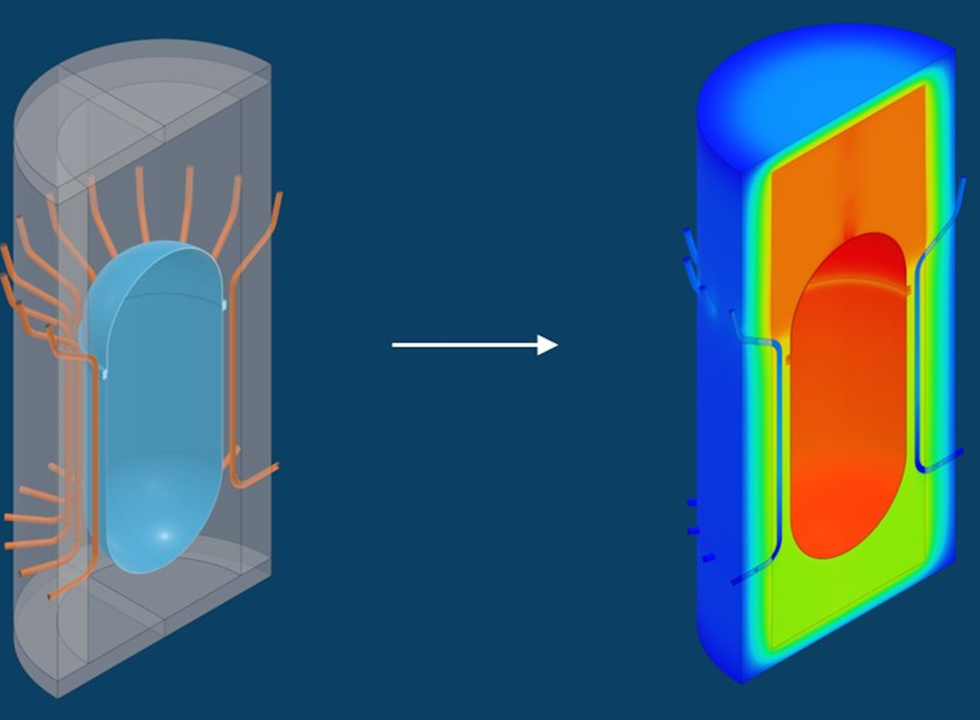
Oil & Gas
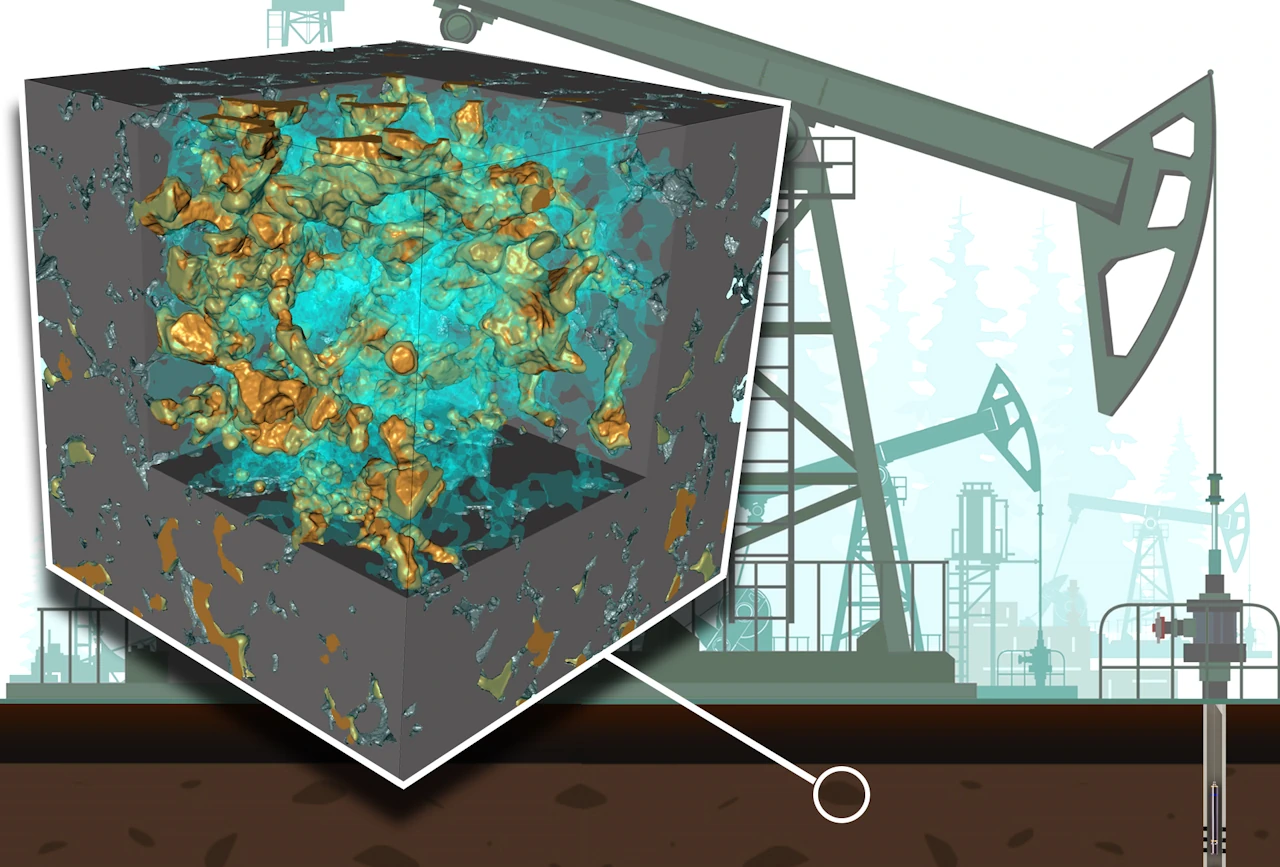
The oil and gas industry faces increasing pressure to achieve Net Zero emissions while maintaining profitability and complying with HSE standards, prompting a shift toward renewable energy and low-carbon technologies like carbon capture.
SIMULIA from Dassault Systèmes supports this transformation by providing high-fidelity physics simulations that optimize designs, enhance safety, and improve operational efficiency across both upstream and downstream sectors. Its suite of simulation engines, including Abaqus Finite Element and PowerFLOW Lattice Boltzmann and DigitalROCK Virtual Rock Lab, helps companies meet sustainability goals, reduce costs, and tackle industry challenges by providing the right information at the right time.
Mining

Metals & Minerals
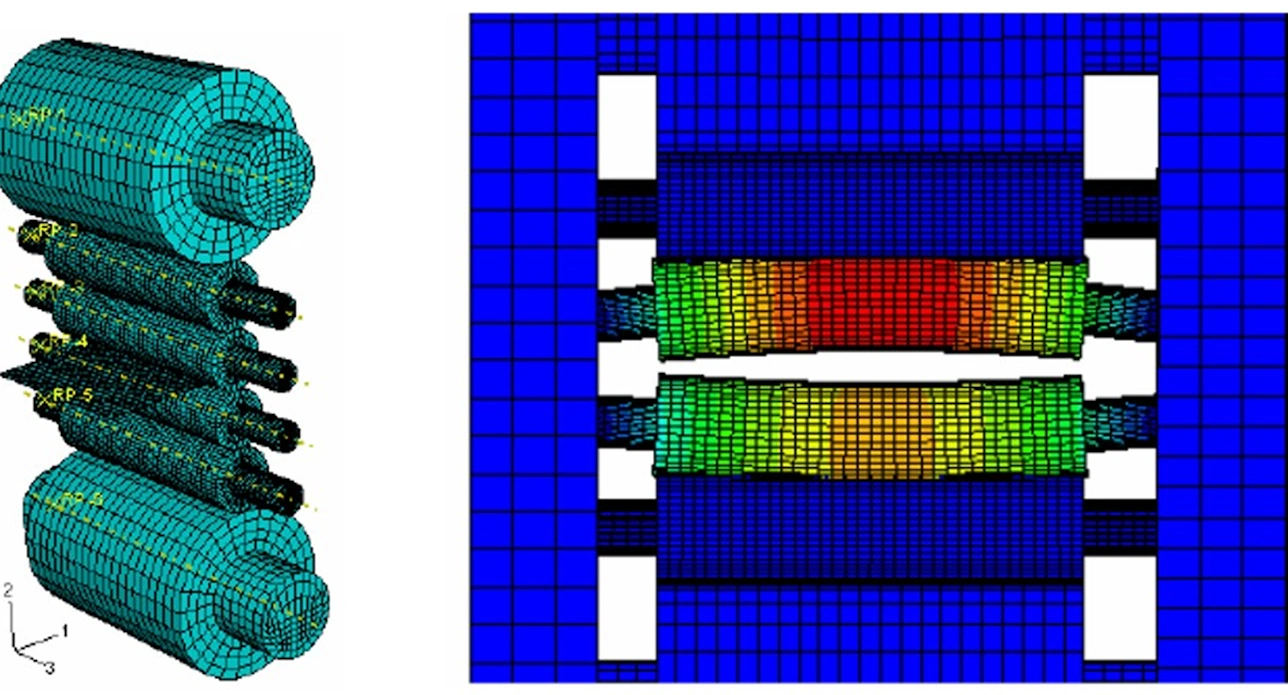
The Metals & Minerals sector faces challenges in decarbonization and sustainability, with steel (and other metal) manufacturers adopting new technologies to cut emissions while dealing with aging infrastructure and labor shortages. SIMULIA from Dassault Systèmes offers high-fidelity physics simulation tools, such as Abaqus (Finite Element), to optimize manufacturing operations, enhance product design, and support energy-efficient processes. By providing timely, accurate simulation data, SIMULIA helps companies improve safety, reduce costs, and achieve their decarbonization goals.
Chemicals
The chemicals industry faces a transformative period driven by stringent regulations, resource instability, and increasing competition. To navigate these challenges, companies across various sub-segments must adopt digital innovations to enhance sustainability, compliance, and profitability. Real physics simulations play a crucial role by optimizing processes and accelerating the development of eco-friendly products, supporting the industry's transition to green chemistry and rapid innovation.
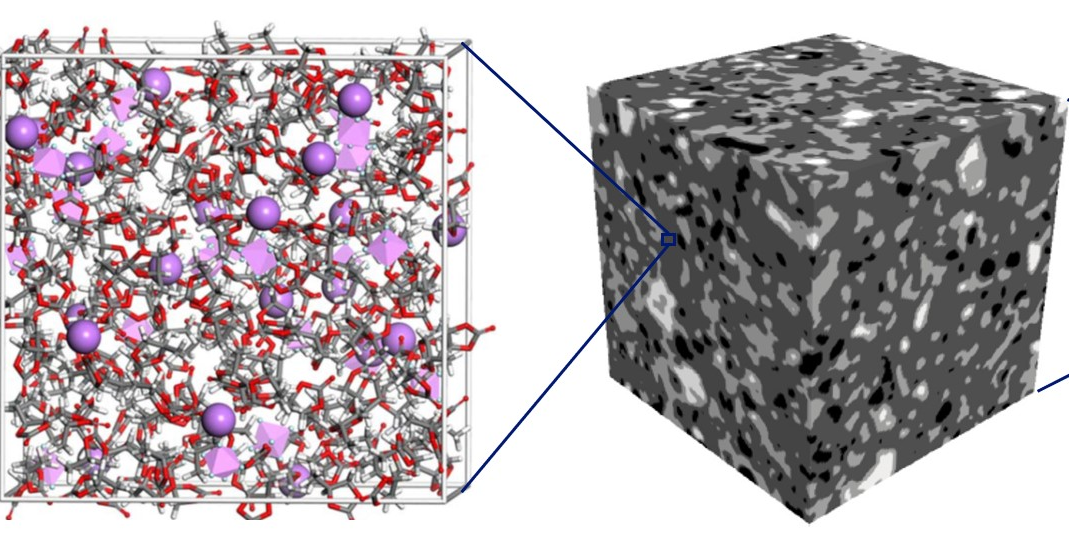
Civil & Transportation Infrastructure
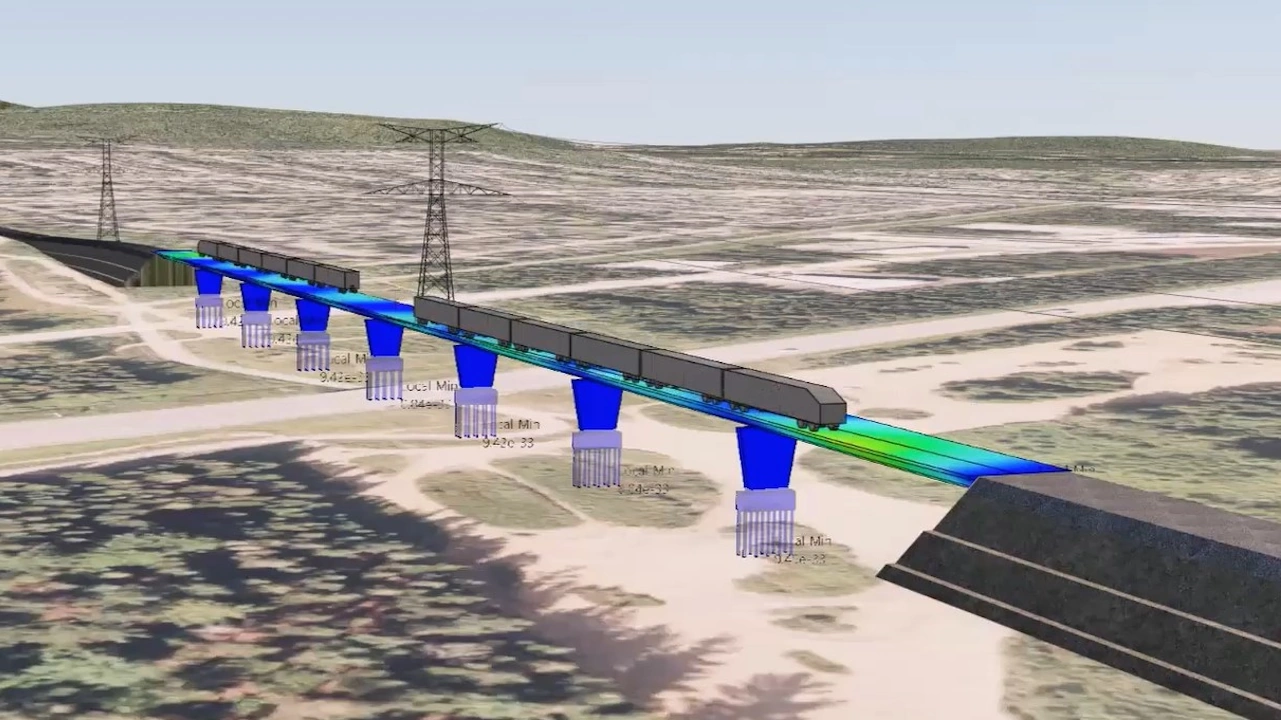
The infrastructure market, valued at $7 trillion, faces challenges such as aging assets, climate change, and growing urbanization, necessitating significant investment in rail infrastructure, amongst others and the adoption of digital technologies. Collaborative project delivery models and innovations in lifecycle management are key to enhancing productivity, reducing costs, and addressing workforce shortages in an increasingly complex and fragmented industry.
Simulation can optimize infrastructure projects by enabling virtual testing of complex systems, improving decision-making, reducing risks, and enhancing efficiency across the entire lifecycle—from planning to maintenance.
SIMULIA Solutions for Infrastructure, Energy & Materials
Infrastructure, Energy & Materials Resources
Explore the technological advancements, innovative methodologies, and evolving industry demands that are reshaping the world of Infrastructure, Energy & Materials. Stay a step ahead with SIMULIA. Discover more about our solutions now.
FAQs about Infrastructure, Energy and Materials
Also Discover
Learn What SIMULIA Can Do for You
Speak with a SIMULIA expert to learn how our solutions enable seamless collaboration and sustainable innovation at organizations of every size.
Get Started
Courses and classes are available for students, academia, professionals and companies. Find the right SIMULIA training for you.
Get Help
Find information on software & hardware certification, software downloads, user documentation, support contact and services offering
